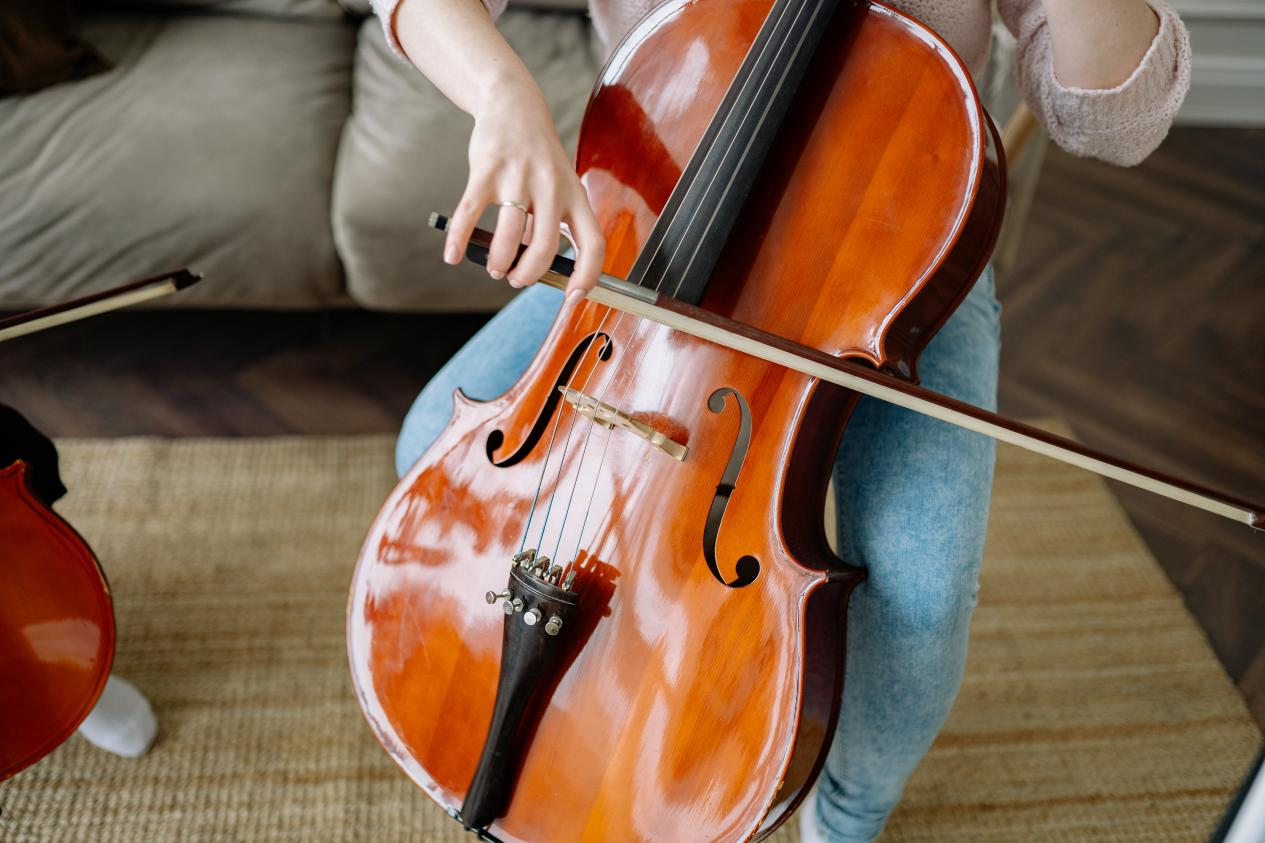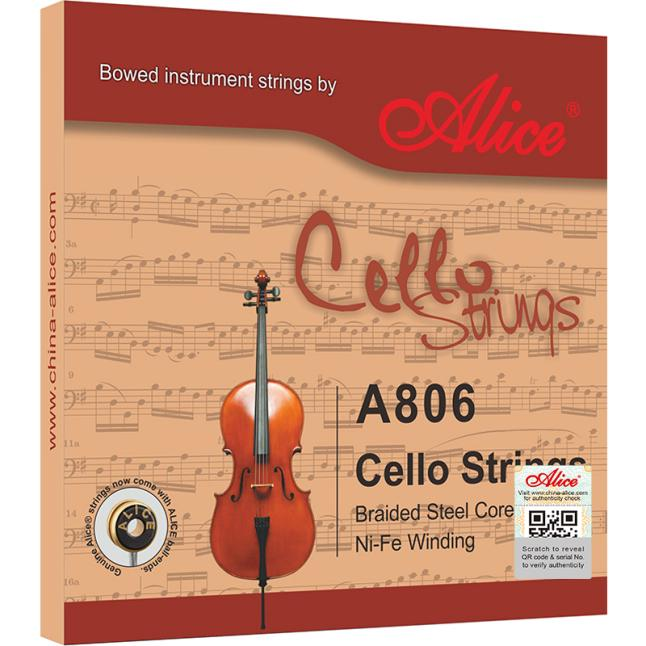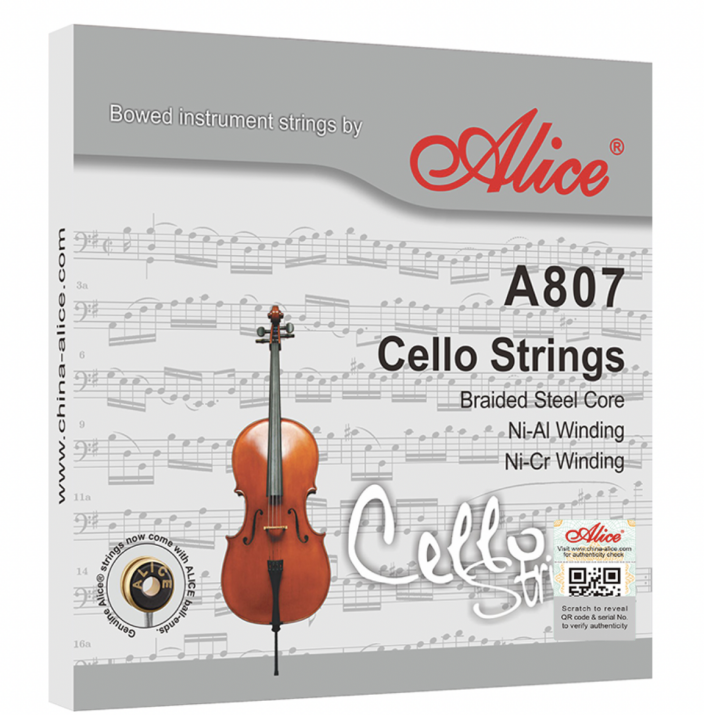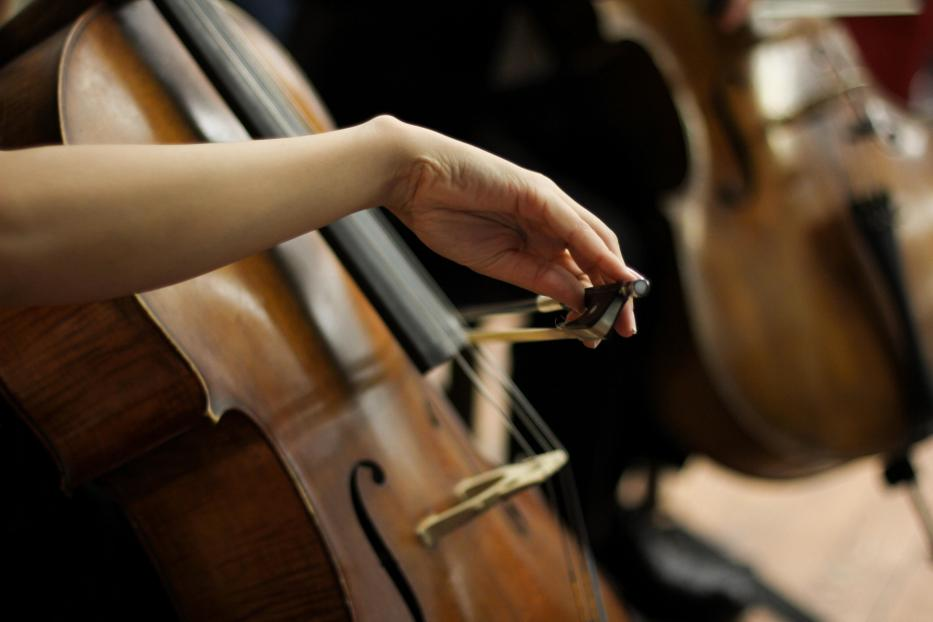The ABCs of Cello Strings: Materials, Tension, and Maintenance
- Views:83
- Writer:
- Time:2023-11-27
The cello has a warm, deep, and expressive tone, which adds rich and heartfelt emotions to the orchestra's music. It not only serves as a foundation for harmony in the ensemble but also frequently performs solo passages. The beauty of the cello's sound depends not only on the performer's skill but also on the influence of the strings, including their materials, tension, and maintenance, which are essential elements in shaping the music. This article will delve into the basic knowledge of cello strings to help you better understand how to maintain a clear and beautiful sound for your cello.

Cello String Material
The two materials used for cello strings have unique sound qualities and characteristics. We will discuss the different features and tonalities of traditional gut strings and synthetic material strings.
- Traditional Gut Strings
Traditional cello strings are usually made from sheep gut. Gut strings naturally produce a warm and gentle tone, evoking rich emotions when played. Their superior storytelling capabilities have made them the preferred choice for cello players. Additionally, gut strings closely resemble the sound of the original instrument and are particularly popular in chamber music and Baroque music performances. However, they do have some disadvantages. Gut strings are susceptible to temperature and humidity and are easily affected by changes in climate, requiring more frequent adjustments and maintenance.
- Synthetic Material Strings
With the advancement of technology, synthetic material strings have gradually gained recognition in cello music. These strings are typically made of nylon, steel wire, or multi-stranded alloys. Compared to traditional gut strings, synthetic material strings have the advantage of excellent adaptability to temperature and humidity. They are less affected by environmental factors and offer better volume and tonal stability. Moreover, synthetic material strings tend to be more durable. However, compared to traditional gut strings, they have a relatively colder tone and slightly less expressive power in terms of emotions.
The Tension of Cello String
Tension is a crucial attribute of cello strings that directly affects the player's playing experience. In this section, we will introduce the concept of tension and explore the impact of different tension levels on playing.
First, let's understand tension. Tension refers to the amount of force applied to the strings. It is determined by the length, diameter, and material of the strings, affecting aspects such as tone, playing pressure, and volume. Generally, cello string manufacturers classify strings into three tension types: high, medium, and low.
High-tension cello strings require more force from the player to produce sound. However, they can generate high volume and clarity, making them suitable for intense pieces such as cello concertos.
Medium-tension cello strings strike a balance between tone and playing pressure. They are versatile and suitable for various musical styles, offering consistent performance that suits most players.
Low-tension cello strings require minimal playing pressure, making playing feel more relaxed. They are suitable for beginners and younger players.

In conclusion, different music styles may require strings of different tensions. Romantic compositions may benefit from high-tension strings, while Baroque music may benefit from low-tension strings. Players need to understand the impact of various tensions and choose strings that align with their personal preferences and needs.
Product Recommendation
A806 Cello String Set stands out for its warm and bright tone, natural responsiveness, and comfortable playability. Its braided steel core ensures stability and durability, while the nickel-iron winding adds brightness and projection to the sound. Not only that, this string set is suitable for standard 4/4 cellos and can also be provided in other sizes as per requirement. If you are looking for a set of cello strings with excellent sound quality, exceptional responsiveness, and outstanding comfort, the A806 Cello String Set is an ideal choice.

A806 Cello String Set
A807 Cello String Set is an original cello string set introduced by the Alice brand. It features a braided steel core with Ni-Al and Ni-Cr winding, bringing warm tones to the cello. This set is designed to deliver superior sound quality for playing, recording, and concert performances. The stability and reliability of the A807 cello strings make them reliable companions for musicians on their journey of musical expression. Whether you are a professional player or an enthusiastic music lover, the A807 Cello String Set will powerfully support your music composition and performance.

A807 Cello String Set
Maintenance of Cello Strings
After understanding the basic knowledge and product introduction of cello strings, let's focus on the maintenance of cello strings, which is crucial for keeping the instrument sound clear and in optimal condition.
- Cleaning is the first step in string maintenance. Avoid letting sweat, residue of rosin, and dust accumulate on the strings. After each play, wipe the cello strings with a clean and soft cloth to remove any residue of rosin and sweat, preventing the strings from becoming dull and unresponsive.
- Regular replacement is necessary. Strings gradually lose their original tone and wear out over time. Depending on the frequency of play, you may need to replace the strings every 6 to 12 months. Different types of strings may require different replacement frequencies.
- Regular tuning is crucial for maintaining pitch accuracy. Use a tuner or reference pitch to tune the strings, ensuring proper tension and angle.
- Changes in temperature and humidity can also affect string tension. Properly maintaining humidity can prevent the strings from stretching too much and the instrument body from cracking. Maintain proper humidity levels in the cello case or the room where the cello is stored.
Following a regular maintenance routine not only helps keep the sound clear and stable but also extends the lifespan of the strings, greatly enhancing your performance.

The materials, tension, and maintenance of cello strings are crucial elements in maintaining the excellent sound of the instrument. We encourage all cello enthusiasts and performers to pay attention to the quality and maintenance of the strings when playing the cello, ensuring that the music always remains in its best condition. If you want more professional advice, please visit our official website for further consultation.
Related Articles:
How to Choose the Right Cello Strings
[Guide] How to Properly Tune a Cello























